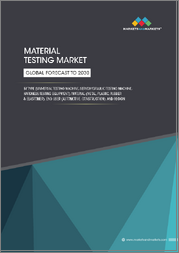
|
시장보고서
상품코드
1639192
에너지 고효율 소재 시장 기회, 성장 촉진요인, 산업 동향 분석,예측(2024-2032년)Energy-Efficient Materials Market Opportunity, Growth Drivers, Industry Trend Analysis, and Forecast 2024 - 2032 |
||||||
세계의 에너지 고효율 소재 시장은 2023년에 148억 달러로 평가되었고, 2024년부터 2032년에 걸쳐 CAGR 8.6%를 나타낼 것으로 예측됩니다.
수급 불균형과 지정학적 긴장과 같은 요인으로 인한 세계 에너지 비용 상승은 소비자와 기업 모두에게 에너지 비용을 줄이는 효과적인 방법을 모색하도록 촉구하고 있습니다.
단열재, 반사 코팅, 스마트 서모스탯 등의 에너지 절약 재료는 냉난방 및 전력에 걸리는 에너지 소비를 줄이는데 있어서 매우 중요한 역할을 하고 있습니다. 이러한 소재는 장기적으로 상당한 절약을 가져올 뿐만 아니라 채용에 강력한 경제적 근거를 제시하고 있습니다. 에너지 소비가 감소함에 따라 주거 및 상업 분야에서 이러한 솔루션이 점점 더 매력적으로 여겨지고 있습니다. 투자수익률(ROI)은 초기 비용을 정당화하는 경우가 많아 시장 도입을 가속화하고 있습니다.
에너지 절약 재료 시장은 제품 유형별로 유리 섬유, 미네랄 울, 셀룰로오스, 스프레이 폼, 발포 폴리스티렌(EPS), 압출 폴리스티렌(XPS), 폴리이소시아누레이트 및 폴리우레탄과 같은 기타 제품으로 분류됩니다. 2023년 47억 달러로 평가된 스프레이 폼 분야는 2024년부터 2032년까지 연평균 복합 성장률(CAGR) 10%로 성장할 것으로 예상됩니다. 에너지 가격이 계속 상승하면서 주택, 상업 및 산업 분야에서 효과적인 에너지 절약 솔루션에 대한 수요가 커지고 있으며, 에너지 절약 재료의 성장을 더욱 촉진하고 있습니다.
| 시장 범위 | |
|---|---|
| 시작년 | 2023 |
| 예측연도 | 2024-2032 |
| 시작금액 | 148억 달러 |
| 예측 금액 | 309억 달러 |
| CAGR | 8.6% |
최종 용도별로는 건축 및 건설, 자동차, 에너지 및 유틸리티, 가전, 기타 등의 주요 분야로 나뉩니다. 건축 및 건설 분야는 2023년 시장 점유율 전체의 약 39%를 차지하고, 2032년까지의 CAGR은 9.2%를 나타낼 것으로 예측됩니다. 자동조명이나 공조제어시스템 등 스마트홈이나 건축기술의 채용이 증가하고 있는 것이 에너지 절약 재료 수요를 크게 촉진하고 있습니다. 이러한 기술은 에너지 낭비를 줄이고 성능을 최적화하기 위해 단열성이 높은 구조에 의존합니다.
미국의 에너지 절약 재료 시장은 2023년 33억 6,000만 달러를 창출했습니다. 미국 시장은 2032년까지 연평균 복합 성장률(CAGR) 8.5%로 성장할 것으로 예상됩니다. 불안정한 에너지 가격, 인플레이션 압력, 재생 가능 에너지원으로의 전환은 에너지 절약 재료에 대한 수요 증가에 기여합니다. 에너지 비용이 계속 상승하면서 주택 소유자와 기업 모두 에너지 소비를 최소화하고 장기적인 광열비를 줄이기 위해 이러한 솔루션에 대한 투자를 늘리고 있습니다.
목차
제1장 조사 방법과 조사 범위
제2장 주요 요약
제3장 업계 인사이트
- 생태계 분석
- 밸류체인에 영향을 미치는 요인.
- 이익률 분석
- 파괴
- 장래의 전망
- 제조업체
- 유통업체
- 공급자의 상황
- 이익률 분석
- 주요 뉴스 및 이니셔티브
- 규제 상황
- 영향요인
- 성장 촉진요인
- 에너지 비용과 광열비 증가
- 그린 빌딩 솔루션에 대한 정부의 엄격한 규제와 인센티브
- 기술의 진보
- 업계의 잠재적 위험 및 과제
- 높은 초기 비용
- 인식과 지식의 부족
- 성장 촉진요인
- 성장 가능성 분석
- Porter's Five Forces 분석
- PESTEL 분석
제4장 경쟁 구도
- 소개
- 기업 점유율 분석
- 경쟁 포지셔닝 매트릭스
- 전략 전망 매트릭스
제5장 시장 추정 및 예측 : 제품 유형별, 2021년-2032년
- 주요 동향
- 유리 섬유
- 미네랄 울
- 셀룰로오스
- 스프레이 폼
- 발포 폴리스티렌(EPS)
- 압출법 폴리스티렌(XPS)
- 기타(폴리이소시아누레이트, 폴리우레탄 등)
제6장 시장 추정 및 예측 : 최종 용도별, 2021년-2032년
- 주요 동향
- 건축 및 건설
- 주택
- 상업
- 공업
- 자동차·운수
- 에너지 및 유틸리티
- 가전
- 기타(제약, 석유 및 가스 등)
제7장 시장 추정 및 예측 : 유통 채널별, 2021년-2032년
- 주요 동향
- 온라인
- 오프라인
제8장 시장 추정 및 예측 : 지역별, 2021년-2032년
- 주요 동향
- 북미
- 미국
- 캐나다
- 유럽
- 영국
- 독일
- 프랑스
- 이탈리아
- 스페인
- 러시아
- 아시아태평양
- 중국
- 인도
- 일본
- 한국
- 호주
- 라틴아메리카
- 브라질
- 멕시코
- 중동 및 아프리카
- UAE
- 사우디아라비아
- 남아프리카
제9장 기업 프로파일
- 3B-The Fiberglass Company
- AGC Glass
- Alleguard
- Isolatek International
- Johns Manville
- Jushi Group
- Knauf Insulation
- Nippon
- NSG Group
- Owens Corning
- PPG Industries
- Rockwool
- Saint-Gobain
The Global Energy-Efficient Materials Market was valued at USD 14.8 billion in 2023 and is projected to grow at 8.6% CAGR from 2024 to 2032. Rising global energy costs, driven by factors such as supply-demand imbalances and geopolitical tensions, are encouraging both consumers and businesses to seek effective ways to cut energy expenses.
Energy-efficient materials like insulation, reflective coatings, and smart thermostats play a pivotal role in reducing energy consumption for heating, cooling, and electricity. These materials not only offer substantial long-term savings but also present a strong economic case for their adoption. As energy consumption decreases, both residential and commercial sectors find these solutions increasingly appealing. The return on investment (ROI) often justifies their initial costs, accelerating their market adoption.
The energy-efficient materials market is categorized based on product type into fiberglass, mineral wool, cellulose, spray foam, expanded polystyrene (EPS), extruded polystyrene (XPS), and other products like polyisocyanurate and polyurethane. The spray foam segment, valued at USD 4.7 billion in 2023, is expected to grow at a CAGR of 10% from 2024 to 2032. As energy prices continue to rise, the demand for effective energy-saving solutions in residential, commercial, and industrial sectors is intensifying, further driving the growth of energy-efficient materials.
| Market Scope | |
|---|---|
| Start Year | 2023 |
| Forecast Year | 2024-2032 |
| Start Value | $14.8 Billion |
| Forecast Value | $30.9 Billion |
| CAGR | 8.6% |
By end-use, the market is divided into several key sectors, including building and construction, automotive, energy and utilities, consumer electronics, and others. The building and construction segment represented nearly 39% of the total market share in 2023 and is anticipated to grow at a CAGR of 9.2% through 2032. The increasing adoption of smart home and building technologies, such as automated lighting and climate control systems, is significantly driving the demand for energy-efficient materials. These technologies depend on well-insulated structures to reduce energy waste and optimize performance.
U.S. energy-efficient materials market generated USD 3.36 billion in 2023. The market in the U.S. is expected to grow at a CAGR of 8.5% through 2032. Volatile energy prices, inflationary pressures, and a shift towards renewable energy sources are contributing to the rising demand for energy-efficient materials. As energy costs continue to climb, both homeowners and businesses are increasingly investing in these solutions to minimize energy consumption and reduce long-term utility expenses.
Table of Contents
Chapter 1 Methodology & Scope
- 1.1 Market scope & definitions
- 1.2 Base estimates & calculations
- 1.3 Forecast calculations.
- 1.4 Data sources
- 1.4.1 Primary
- 1.4.2 Secondary
- 1.4.2.1 Paid sources
- 1.4.2.2 Public sources
Chapter 2 Executive Summary
- 2.1 Industry synopsis, 2021-2032
Chapter 3 Industry Insights
- 3.1 Industry ecosystem analysis
- 3.1.1 Factor affecting the value chain.
- 3.1.2 Profit margin analysis.
- 3.1.3 Disruptions
- 3.1.4 Future outlook
- 3.1.5 Manufacturers
- 3.1.6 Distributors
- 3.2 Supplier landscape
- 3.3 Profit margin analysis.
- 3.4 Key news & initiatives
- 3.5 Regulatory landscape
- 3.6 Impact forces
- 3.6.1 Growth drivers
- 3.6.1.1 Increasing energy cost & utility cost
- 3.6.1.2 Stringent government regulations & incentives towards green building solutions
- 3.6.1.3 Technological advancements
- 3.6.2 Industry pitfalls & challenges
- 3.6.2.1 High upfront cost
- 3.6.2.2 Lack of awareness and knowledge
- 3.6.1 Growth drivers
- 3.7 Growth potential analysis
- 3.8 Porter's analysis
- 3.9 PESTEL analysis
Chapter 4 Competitive Landscape, 2023
- 4.1 Introduction
- 4.2 Company market share analysis
- 4.3 Competitive positioning matrix
- 4.4 Strategic outlook matrix
Chapter 5 Market Estimates & Forecast, By Product Type, 2021-2032 (USD Billion) (Kilo Tons)
- 5.1 Key trends
- 5.2 Fiberglass
- 5.3 Mineral wool
- 5.4 Cellulose
- 5.5 Spray foam
- 5.6 Expanded polystyrene (EPS)
- 5.7 Extruded polystyrene (XPS)
- 5.8 Others (polyisocyanurate, Polyurethane, etc.)
Chapter 6 Market Estimates & Forecast, By End Use, 2021-2032 (USD Billion) (Kilo Tons)
- 6.1 Key trends
- 6.2 Building & construction
- 6.2.1 Residential
- 6.2.2 Commercial
- 6.2.3 Industrial
- 6.3 Automotive & transportation
- 6.4 Energy & utilities
- 6.5 Consumer electronics
- 6.6 Others (pharmaceutical, oil & gas, etc.)
Chapter 7 Market Estimates & Forecast, By Distribution Channel, 2021-2032 (USD Billion) (Kilo Tons)
- 7.1 Key trends
- 7.2 Online
- 7.3 Offline
Chapter 8 Market Estimates & Forecast, By Region, 2021-2032 (USD Billion) (Kilo Tons)
- 8.1 Key trends
- 8.2 North America
- 8.2.1 U.S.
- 8.2.2 Canada
- 8.3 Europe
- 8.3.1 UK
- 8.3.2 Germany
- 8.3.3 France
- 8.3.4 Italy
- 8.3.5 Spain
- 8.3.6 Russia
- 8.4 Asia Pacific
- 8.4.1 China
- 8.4.2 India
- 8.4.3 Japan
- 8.4.4 South Korea
- 8.4.5 Australia
- 8.5 Latin America
- 8.5.1 Brazil
- 8.5.2 Mexico
- 8.6 MEA
- 8.6.1 UAE
- 8.6.2 Saudi Arabia
- 8.6.3 South Africa
Chapter 9 Company Profiles
- 9.1 3B-The Fiberglass Company
- 9.2 AGC Glass
- 9.3 Alleguard
- 9.4 Isolatek International
- 9.5 Johns Manville
- 9.6 Jushi Group
- 9.7 Knauf Insulation
- 9.8 Nippon
- 9.9 NSG Group
- 9.10 Owens Corning
- 9.11 PPG Industries
- 9.12 Rockwool
- 9.13 Saint-Gobain



















